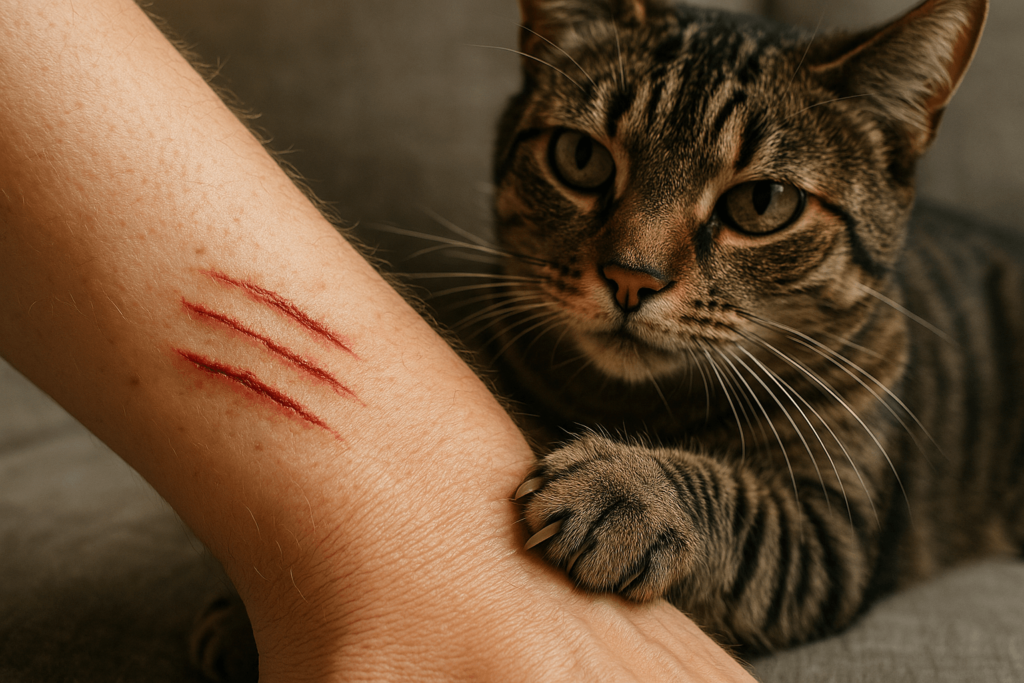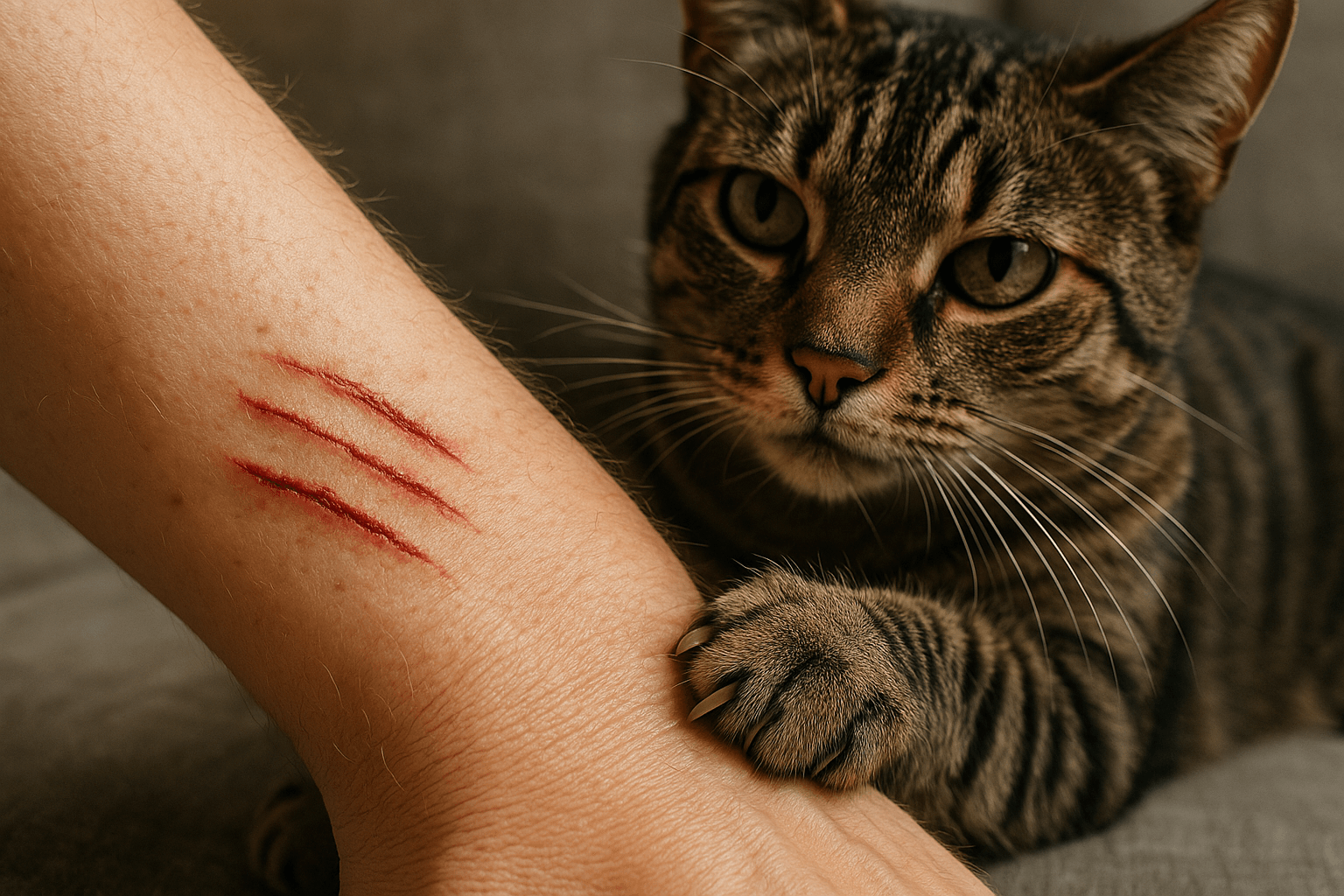Can You Get Toxoplasmosis from a Cat Scratch? The Truth Behind the Fear
Many cat owners worry: Can you get toxoplasmosis from a cat scratch? The short answer is no — not directly. But the fear persists, fueled by misinformation and sensational headlines. Toxoplasmosis is a parasitic infection caused by Toxoplasma gondii, and while cats play a role in its lifecycle, transmission through scratches is extremely rare. Understanding the real risks — and how to protect yourself — is essential for every cat guardian. This guide separates fact from fiction, explains how toxoplasmosis truly spreads, and gives you practical, science-backed steps to keep both you and your cat safe.
The Real Ways Toxoplasmosis Spreads — Not Through Scratches
Toxoplasmosis is often misunderstood, and conflating it with cat scratches is a common myth. The parasite Toxoplasma gondii has a complex lifecycle, and transmission requires very specific conditions. Here’s what actually matters:
Ingesting contaminated feces is the primary route — this means handling litter boxes without washing hands afterward, especially if the stool is less than 24 hours old.
Eating undercooked meat, particularly pork, lamb, or venison, is a far more common source of infection than any interaction with a cat.
Consuming unwashed produce grown in soil contaminated with infected cat feces can also transmit the parasite.
Mother-to-fetus transmission during pregnancy is a serious concern, but only if the mother becomes infected for the first time while pregnant.
Drinking contaminated water in rare cases, especially in rural or developing regions, can introduce the parasite into the body.
A cat scratch does not transmit Toxoplasma gondii. The parasite lives in the cat’s intestines and is shed in feces — not in saliva, blood, or claws. Unless your scratch is contaminated with fresh fecal matter (which is biologically implausible), there is no risk. The fear is real, but the mechanism is not.

Why People Think Cat Scratches Cause Toxoplasmosis — And Why It’s Wrong
Misconceptions about toxoplasmosis stem from oversimplified media reports and a lack of clarity around feline biology. Let’s clear up the confusion once and for all.
Cats are not “dirty” animals — they groom obsessively and are among the cleanest pets in the home.
The parasite isn’t on their claws — it’s confined to the intestinal tract and only becomes infectious after 1–5 days in the environment.
Scratches carry bacteria, not parasites — while scratches can lead to cat scratch disease (caused by Bartonella henselae), that’s a completely different illness.
Toxoplasmosis doesn’t spread through skin contact — the parasite must be ingested to cause infection. It cannot penetrate intact skin.
Outdoor cats are not automatically dangerous — even outdoor cats only shed the parasite for 1–2 weeks after their first infection, and often show no symptoms.
This myth persists because people confuse cat scratch disease with toxoplasmosis. One is bacterial, one is parasitic. One is rare and mild; the other is usually asymptomatic in healthy adults. Understanding the difference is the first step to reducing unnecessary fear.
Check this guide 👉Why Does a Cat Scratch? Best 7 Expert Tips!
Check this guide 👉Cat Scratched Dog Eye White Spot: Best 7 Expert Tips!
Check this guide 👉Why Is My Cat Scratching the Window? Best 7 Expert Tips!
| True Toxoplasmosis Risks | Common Misconceptions |
|---|---|
| Ingesting oocysts from contaminated cat feces in litter boxes | Getting toxoplasmosis from a cat scratch or lick |
| Eating undercooked or raw meat containing tissue cysts | Cats are the main source of human infection |
| Consuming unwashed fruits or vegetables grown in contaminated soil | Indoor cats cannot carry the parasite |
| Congenital transmission from mother to unborn child | All cats shed the parasite constantly |
| Drinking untreated water in high-risk areas | Toxoplasmosis is always dangerous |
How Cats Actually Become Infected — And Why It’s Rare
Most pet owners assume their cat is a carrier — but the reality is far more nuanced. Only a small percentage of cats ever shed the parasite, and even then, only briefly.
Cats become infected by eating infected prey — mice, birds, or raw meat — not by being “dirty” or unclean.
Once infected, they shed oocysts for only 1–2 weeks — then develop immunity and never shed again.
Indoor cats fed commercial food rarely get infected — they have no access to raw prey or contaminated soil.
Kittens are more likely to shed — but even then, the window is short and the risk to humans is minimal.
Most infected cats show no signs — no diarrhea, no lethargy, no visible illness. They’re silent carriers — and often never even knew they were exposed.
This means that unless your cat hunts rodents or eats raw meat, the chance they’ve ever shed Toxoplasma gondii is extremely low. And even if they did — the oocysts must sit in the litter box for 1–5 days to become infectious. Daily scooping eliminates the risk entirely.
Preventing Toxoplasmosis — Simple, Science-Backed Steps for Cat Owners
You don’t need to give up your cat to stay safe. With a few practical habits, you can eliminate nearly all risk of toxoplasmosis — without sacrificing the joy of pet ownership.
Scoop the litter box daily — this prevents oocysts from becoming infectious. Wear gloves if you’re pregnant or immunocompromised.
Wash your hands thoroughly after handling litter or gardening — soap and water are your best defense.
Cook meat to safe internal temperatures — use a meat thermometer. Pork, lamb, and venison should reach at least 160°F (71°C).
Wash fruits and vegetables before eating — even organic produce can be contaminated by soil.
Keep your cat indoors — this prevents exposure to infected prey and reduces environmental contamination.
These aren’t extreme measures. They’re common-sense hygiene practices that benefit your entire household. You’re not protecting yourself from your cat — you’re protecting yourself from environmental exposure. Your cat is not the enemy.
Myths About Toxoplasmosis and Pregnancy — What You Really Need to Know
Pregnant women are often told to avoid cats entirely — but this advice is outdated, inaccurate, and unnecessarily frightening.
Most women are already immune — studies show 30–50% of adults have antibodies from prior exposure, making reinfection impossible.
Only a first-time infection during pregnancy poses risk — if you’ve had toxoplasmosis before, your baby is protected.
Indoor cats fed dry or canned food pose almost zero risk — the CDC confirms this repeatedly in public health guidance.
Testing is available and reliable — your OB-GYN can test for antibodies before or during pregnancy to determine your status.
Avoiding cats doesn’t guarantee safety — many infections come from undercooked meat or unwashed produce, not from cats.
The real danger isn’t your cat. It’s misinformation. Talk to your doctor, get tested, and keep your cat. You’re not putting your baby at risk by loving your feline companion.
Cat Scratch Disease vs. Toxoplasmosis — Know the Difference
It’s critical to distinguish between two entirely different conditions that are often confused due to their association with cats.
Cat Scratch Disease (CSD) is caused by Bartonella henselae bacteria — transmitted through scratches or bites, especially from kittens.
Toxoplasmosis is caused by the Toxoplasma gondii parasite — transmitted only by ingestion of oocysts or cysts, never by skin contact.
CSD symptoms include swollen lymph nodes, fever, fatigue, and sometimes headaches — usually mild and self-resolving.
Toxoplasmosis symptoms in healthy adults are often absent — or flu-like (fever, muscle aches, fatigue) — and rarely serious.
CSD is more likely from kittens — who are more playful and prone to scratching.
Toxoplasmosis is more likely from food or soil — not from your pet’s behavior.
Confusing these two leads to unnecessary panic. If your child gets scratched, treat the wound. Don’t assume it’s toxoplasmosis. If you’re pregnant and worried about food, wash your produce. Don’t ban your cat.
When to See a Doctor — Signs You Might Need Medical Attention
While toxoplasmosis is rarely dangerous, there are situations where professional evaluation is necessary.
Flu-like symptoms lasting more than a week — especially if you’re pregnant or immunocompromised.
Blurred vision or eye pain — ocular toxoplasmosis, though rare, can occur and requires prompt treatment.
Severe headaches, confusion, or seizures — signs of neurological involvement, which is extremely rare in healthy individuals.
A positive test result during pregnancy — your doctor may recommend further testing or treatment.
Persistent swollen lymph nodes after a scratch — this could indicate cat scratch disease, not toxoplasmosis.
In most cases, toxoplasmosis resolves on its own without treatment. But if you’re in a high-risk group — or symptoms persist — don’t hesitate to consult a healthcare provider. Knowledge is power. Fear is not.
Frequently Asked Questions About Toxoplasmosis and Cats
Can I get toxoplasmosis from petting my cat?
No. The parasite is not on their fur or skin. Petting, cuddling, or holding your cat poses zero risk.
Do I need to get rid of my cat if I’m pregnant?
Absolutely not. The CDC, WHO, and American College of Obstetricians all agree: indoor cats fed commercial food are safe.
Is it safe to let my cat sleep in my bed?
Yes. As long as you don’t ingest litter or raw meat, your cat’s presence in your bed is harmless.
Can I test my cat for toxoplasmosis?
Yes — but it’s rarely useful. A positive test only means your cat was infected in the past. It doesn’t mean they’re currently shedding.
How long do oocysts survive in the environment?
Up to 18 months in moist soil — but they only become infectious after 1–5 days. Daily litter box cleaning eliminates the threat.
Embrace Your Cat — Without Fear
Toxoplasmosis is not a cat problem. It’s a food and hygiene problem. Your cat is not the source of danger — misinformation is. By understanding how this parasite truly spreads, you can enjoy the companionship of your feline friend without fear, guilt, or unnecessary restrictions. Whether you’re pregnant, immunocompromised, or simply a loving pet parent, the truth is simple: keeping your litter box clean, cooking your food properly, and washing your hands are the only actions that matter. Your cat doesn’t need to be banished to the backyard. They need your trust — and your understanding. Give them both. Your home, your health, and your heart will thank you.
Canned Pumpkin for Cat Diarrhea: Best 7 Expert Tips! Natural remedy to firm stools, soothe upset bellies, and support gut health safely.
Can a Cat Give You Scabies? Best 7 Expert Tips! Discover the truth about feline mites, human skin risks, and how to protect yourself—without panic.
Cat Flea vs Human Flea: Best 7 Expert Tips! Discover the truth about bites, species, and how to eliminate infestations for good.
Weird Cat Behaviors: Best 7 Expert Tips! Discover why cats do strange things—and how to understand, not punish, their instincts for a happier home.





